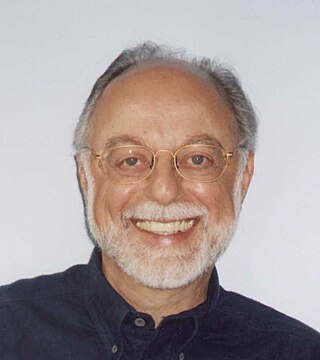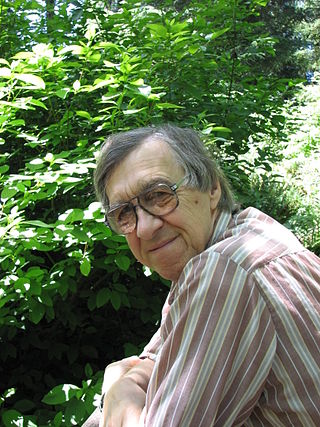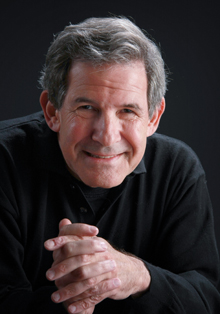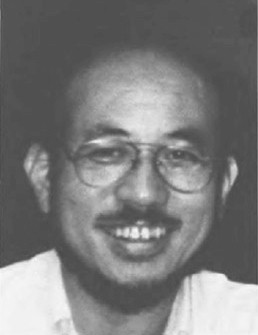
Remote viewing (RV) is the practice of seeking impressions about a distant or unseen subject, purportedly sensing with the mind. A remote viewer is expected to give information about an object, event, person, or location hidden from physical view and separated at some distance. Physicists Russell Targ and Harold Puthoff, parapsychology researchers at Stanford Research Institute (SRI), are generally credited with coining the term "remote viewing" to distinguish it from the closely related concept of clairvoyance. According to Targ, the term was first suggested by Ingo Swann in December 1971 during an experiment at the American Society for Psychical Research in New York City.
The Stargate Project was a secret U.S. Army unit established in 1977 at Fort Meade, Maryland, by the Defense Intelligence Agency (DIA) and SRI International to investigate the potential for psychic phenomena in military and domestic intelligence applications. The project, and its precursors and sister projects, originally went by various code names – 'Gondola Wish', 'Stargate', 'Grill Flame', 'Center Lane', 'Project CF', 'Sun Streak', and 'Scanate' – until 1991 when they were consolidated and rechristened as the "Stargate Project".

Brian David Josephson is a Welsh physicist and was professor emeritus of physics at the University of Cambridge. Best known for his pioneering work on superconductivity and quantum tunnelling, he shared the 1973 Nobel Prize in Physics with Leo Esaki and Ivar Giaever for his discovery of the Josephson effect, made in 1962 when he was a 22 year-old PhD student at Cambridge.

Fred Alan Wolf is an American theoretical physicist specializing in quantum physics and the relationship between physics and consciousness. He is a former physics professor at San Diego State University, and has helped to popularize science on the Discovery Channel. He is the author of a number of physics-themed books including Taking the Quantum Leap (1981), The Dreaming Universe (1994), Mind into Matter (2000), and Time Loops and Space Twists (2011).

Charles T. Tart is an American psychologist and parapsychologist known for his psychological work on the nature of consciousness, as one of the founders of the field of transpersonal psychology, and for his research in parapsychology.
Ingo Douglass Swann was an American psychic, artist, and author, whose claims of clairvoyance were investigated as a part of the Central Intelligence Agency’s Stargate Project. Swann is credited as the creator of the term “Remote Viewing," a term which refers to the use of extrasensory perception to perceive distant persons, places, or events.
Harold Edward Puthoff, often known as Hal Puthoff, is an American electrical engineer and parapsychologist.

Russell Targ is an American physicist, parapsychologist, and author who is best known for his work on remote viewing.
Evan Harris Walker, was an American physicist and parapsychologist.

Gary Zukav is an American author known for his works on human consciousness and spirituality, including four consecutive New York Times Best Sellers. Beginning in 1998, he appeared more than 30 times on The Oprah Winfrey Show to discuss transformation in human consciousness concepts presented in his book The Seat of the Soul. His first book, The Dancing Wu Li Masters (1979), won a U.S. National Book Award.

Quantum mysticism, sometimes referred to pejoratively as quantum quackery or quantum woo, is a set of metaphysical beliefs and associated practices that seek to relate spirituality or mystical worldviews to the ideas of quantum mechanics and its interpretations. Quantum mysticism is considered pseudoscience and quackery by quantum mechanics experts.
The quantum mind or quantum consciousness is a group of hypotheses proposing that local physical laws and interactions from classical mechanics or connections between neurons alone cannot explain consciousness, positing instead that quantum-mechanical phenomena, such as entanglement and superposition that cause nonlocalized quantum effects, interacting in smaller features of the brain than cells, may play an important part in the brain's function and could explain critical aspects of consciousness. These scientific hypotheses are as yet unvalidated, and they can overlap with quantum mysticism.

Jun John Sakurai was a Japanese–American particle physicist and theorist.

Nick Herbert is an American physicist and author, best known for his book Quantum Reality.

Keith Schwab is an American physicist and a professor of applied physics at the California Institute of Technology (Caltech). His contributions are in the areas of nanoscience, ultra-low temperature physics, and quantum effects.
The Fundamental Fysiks Group was founded in San Francisco in May 1975 by two physicists, Elizabeth Rauscher and George Weissmann, at the time both graduate students at the University of California, Berkeley. The group held informal discussions on Friday afternoons to explore the philosophical implications of quantum theory. Leading members included Fritjof Capra, John Clauser, Philippe Eberhard, Nick Herbert, Jack Sarfatti, Saul-Paul Sirag, Henry Stapp, and Fred Alan Wolf.
Basil J. Hiley, is a British quantum physicist and professor emeritus of the University of London.
Paavo Pylkkänen is a Finnish philosopher of mind. He is an Associate Professor of Philosophy at the University of Skövde and a university lecturer in theoretical philosophy at the University of Helsinki. He is known for his work on mind-body studies, building on David Bohm's interpretation of quantum mechanics, in particular Bohm's view of the cosmos as an enfolding and unfolding whole including mind and matter.
Elizabeth A. Rauscher was an American physicist and parapsychologist.

Epistemological Letters was a hand-typed, mimeographed "underground" newsletter about quantum physics that was distributed to a private mailing list, described by the physicist and Nobel laureate John Clauser as a "quantum subculture", between 1973 and 1984.










